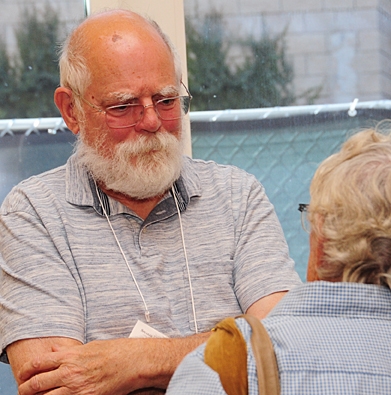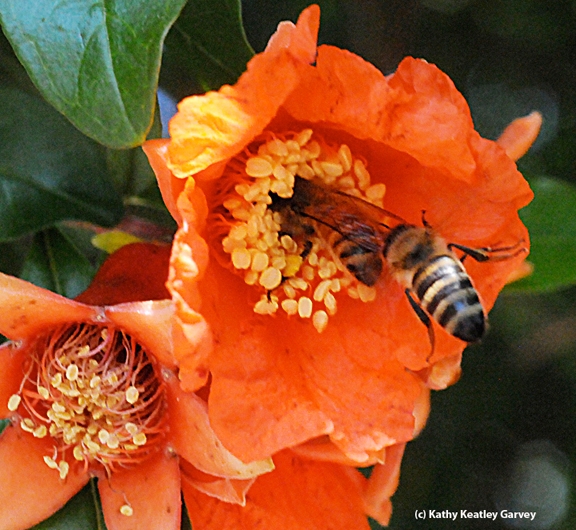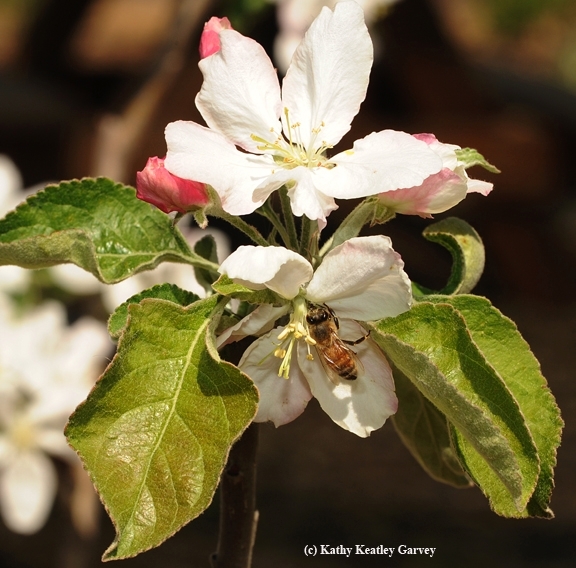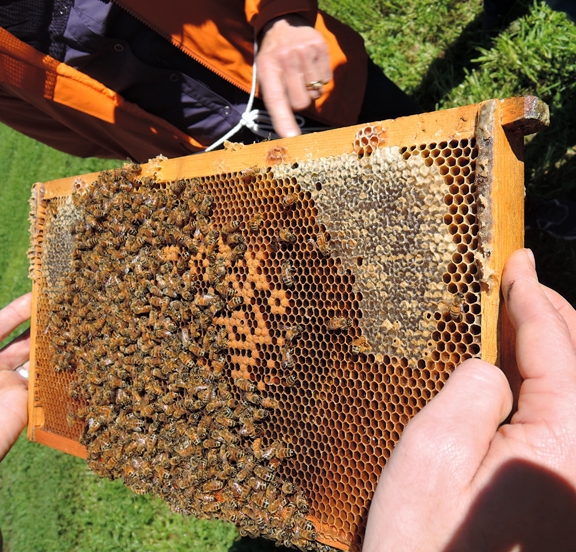
The day originated back in the 1800s as a way to recognize and thank farmers for all the work they do to feed our nation--and the world.
It's also time to thank a beekeeper.
When beekeeper Kim Flottum of northeast Ohio, the 30-year editor of Bee Culture, addressed the recent Western Apicultural Society's 40th annual conference at UC Davis, he predicted that the nation's 250,000 beekeepers (who manage around 4 million colonies) will turn into a million beekeepers in five years.
A million. We can only hope!
Flottum applauded "the incredible rise of new beekeepers in the last 10 years."
"The urban, surburban and country beekeepers are younger than the norm and we have more women beekeepers than ever," said Flottum, who launched the magazine, BEEKeeping, Your First Three Years, two years ago. "This isn't like the 1970s Green Movement--I'm old enough to remember that. It's got legs! But watch out for an ugly urban disaster like a major beespill or bad honey recall."
Beekeepers are becoming more and more diverse, specializing in honey production, pollination services and queen bee breeding. Pollination services and queen bee breeding are the most profitable, Flottum said. Honey, not so much.
"If I'm in beekeeping, pollination services is sure bet," he said. "Beekeepers now get 200 bucks a colony for almond pollination in California. Pollination is more profitable than honey. Bee breeding? Queens can sell for as much as $40 or $50."
"In the United States, we eat on the average 1.2 pounds a year, but in Canada, it's 2.5 or 2.4 pounds." He lamented that unsafe and/or questionable honey from China floods our nation's supermarkets and is being sold at undercut prices. (Some statistics indicate that a "third or more of all the honey consumed in the U.S. is likely to have been smuggled in from China and may be tainted with illegal antibiotics and heavy metals"--Food Safety News.)
It's important for American beekeepers to label their honey "Made in America" or localize it by city or state, he said.
Flottum also touched on such issues as honey bee health, nutrition, loss of habitat, poor quality forage, and pesticides.
The varroa mite/virus is the No. 1 problem for beekeepers, he said. "Other stresses include nutrition, nosema, pesticides...All of these can be fixed with money, increased diversity of bee stock, and a move way from both ag and in-hive legal and illegal chemicals."
Meanwhile, thankfully, the appreciation of honey bees seems to be growing. Brought here in 1622 by European colonists in Jamestown, Va., bees now pollinate about one-third of the food we eat.
Happy Farmers' Day. Happy Beekeepers' Day.
(Editor's Note: Extension apiculturist Elina Lastro Niño and her colleagues at the Harry H. Laidlaw Jr. Honey Bee Research Facility, UC Davis, teach beekeeping and bee health workshops. See the Niño lab at http://elninobeelab.ucdavis.edu/. The UC Davis Honey and Pollination Center is hosting a two-day course on honey, Nov. 10-11.)
Attached Images:

Two honey bees want the same pomegranate blossom. (Photo by Kathy Keatley Garvey)

A honey bee pollinating an apple blossom. (Photo by Kathy Keatley Garvey)

A new beekeeper examines a frame during a UC Davis honey bee course at the Harry H. Laidlaw Jr. Honey Bee Research Facility. Extension apiculturist Elina Lastro Niño and her staff teach classes for the public. (Photo by Kathy Keatley Garvey)